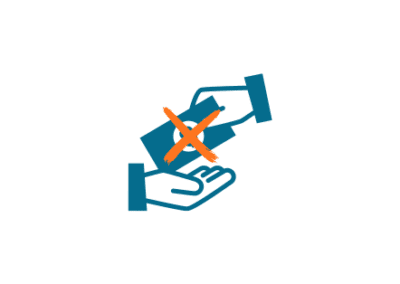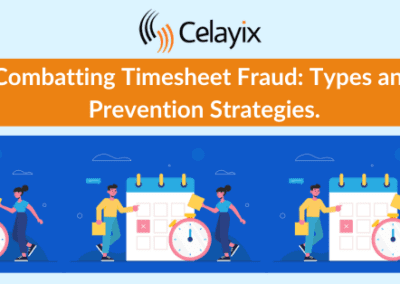Running a healthcare practice can be incredibly rewarding, but it also comes with its fair share of challenges. One of the most critical challenges healthcare providers face is understaffing. Understaffing can have detrimental effects on patient care, staff morale, and the overall efficiency of your practice. In this comprehensive guide, we will explore effective strategies to avoid understaffing and maintain a thriving healthcare practice.
By 2025, the U.S. is estimated to have a shortage of approximately 446,000 home health aides, 95,000 nursing assistants, 98,700 medical and lab technologists and technicians, and more than 29,000 nurse practitioners…
Mercer analytics
The Impact of Understaffing
Before diving into the solutions, it’s essential to understand the repercussions of understaffing in a healthcare setting. Here are some of the key issues associated with a shortage of staff:
1. Decreased Quality of Care
Understaffing often leads to rushed patient interactions, longer wait times, and overworked staff. When you have less staff on the floor than needed, the caregivers that are present must manage increased workloads. These factors can compromise the quality of their work and care provided, potentially resulting in medical errors or missed diagnoses.
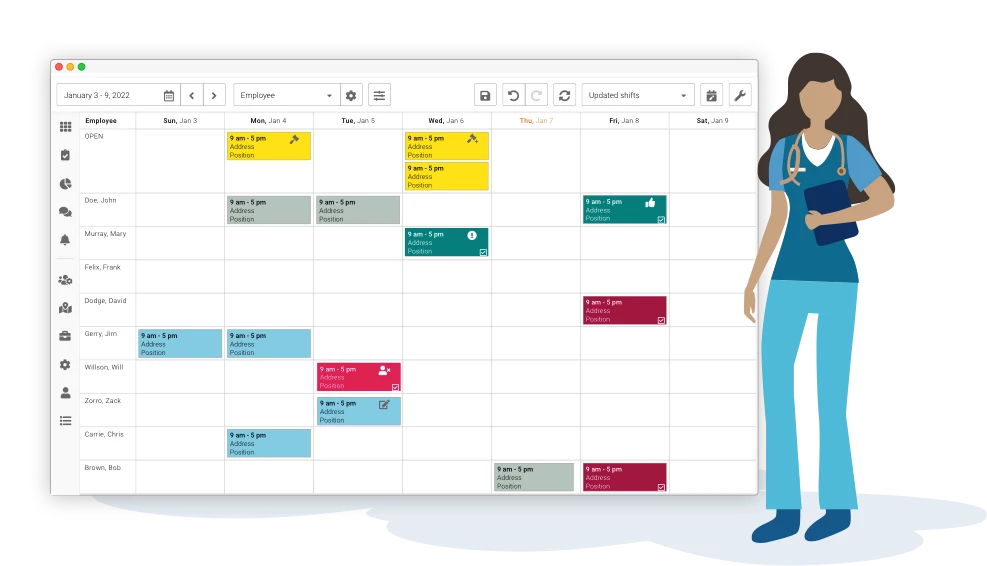
2. Burnout and Low Morale
Healthcare professionals already work in a high-stress environment. When there aren’t enough hands on deck, it can lead to burnout, exhaustion, and low employee morale, ultimately affecting job satisfaction and employee retention rates.
3. Financial Implications
Understaffing issues can impact your practice’s financial health. Increased overtime pay and agency staffing costs can add up, eating into your profits. These are also only short term fixes for a much bigger problem. Additionally, patient dissatisfaction due to long wait times can lead to a loss of business.
So, as you can imagine, the issue of understaffing is one that should be of the highest priority for healthcare businesses.
Strategies to Avoid Understaffing
There’s no denying that there is a talent shortage across the healthcare industry across North America. Although it seems as if the great resignation is coming to an end, the affects are still being felt by almost every healthcare provider. However, once you have a strong foundation of staff, you can try the strategies below to avoid understaffing in your healthcare business.
1. Analyze Historical Data
Start by analyzing historical data to identify staffing patterns and trends. Look for patterns in patient volume, busy seasons, and peak hours. This information will enable you to anticipate when you may need additional staff. Consider using healthcare analytics software or artificial intelligence to streamline this process and gain deeper insights.
2. Implement Employee Scheduling Software
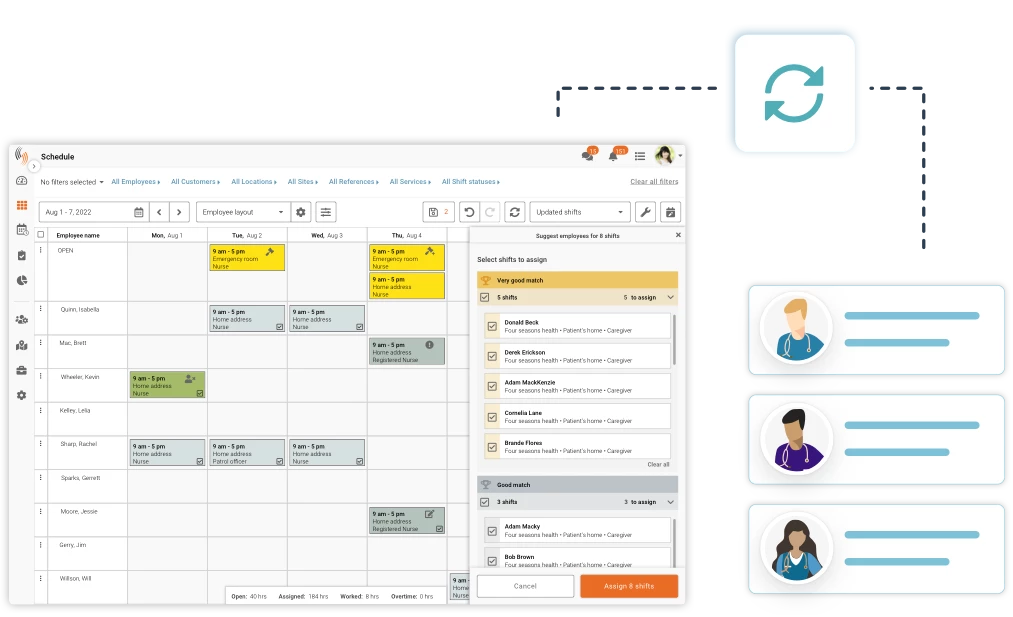
Understaffing problems are sometimes simply related to poor employee scheduling processes. Employee scheduling software can help you create efficient scheduling practices that take into account the data you’ve collected. Ensure that your staff schedule aligns with patient demand. Consider flexible scheduling options like part-time employees, per diem staff, or temporary contractors during peak times. Additionally, employee scheduling software can optimize staff allocation based on demand and employee availability.
Celayix employee scheduling software gives you all of the tools you need to ensure that staffing levels are as efficient as possible. Staffing ratios, overtime alerts, find replacement tools along with other features make life for schedulers much easier.
In fact, employee scheduling software can help you effectively deploy a lot of the strategies covered in this post.
3. Cross-Train Your Staff
Cross-training your healthcare professionals can be invaluable. When staff members are proficient in multiple roles, they can fill in during short-staffed periods, ensuring continuity of care without compromising quality. Develop a cross-training program that covers essential tasks and procedures across different roles within your practice.
4. Build a Pool of On-Call Staff
Maintain a pool of per diem or on-call staff who can step in when needed. It can be almost impossible to rely solely on full time workers if you’re regularly dealing with understaffing. These flexible employees can be a lifesaver during unexpected staff shortages or surges in patient volume. Create clear communication channels to quickly reach these staff members when their services are required.
5. Invest in Staff Development

Encourage your staff’s professional development. When employees feel valued and have opportunities for growth, they are more likely to stay with your practice. This reduces the risk of understaffing due to high employee turnover. Consider offering ongoing training, certification programs, and career advancement opportunities within your practice.
6. Monitor Staff Workloads
Regularly assess your staff’s workload to prevent burnout. Encourage open communication so that employees can voice their concerns about workload and stress levels. Implement workload management tools and regular check-ins to ensure that each team member’s responsibilities are manageable.
7. Conduct Regular Staffing Audits
Perform periodic staffing audits to evaluate the efficiency of your current staffing levels. Make necessary adjustments based on changing patient demographics, regulations, or market conditions. Seek feedback from your healthcare team to identify areas where additional support or staff reallocation may be necessary.
8. Collaborate with Staffing Agencies
Establish relationships with staffing agencies specializing in healthcare. They can provide temporary staff when you face unexpected staffing shortages or during peak seasons. Maintain a list of reputable agencies and ensure they understand your practice’s specific staffing needs and requirements.
9. Communicate with Your Team
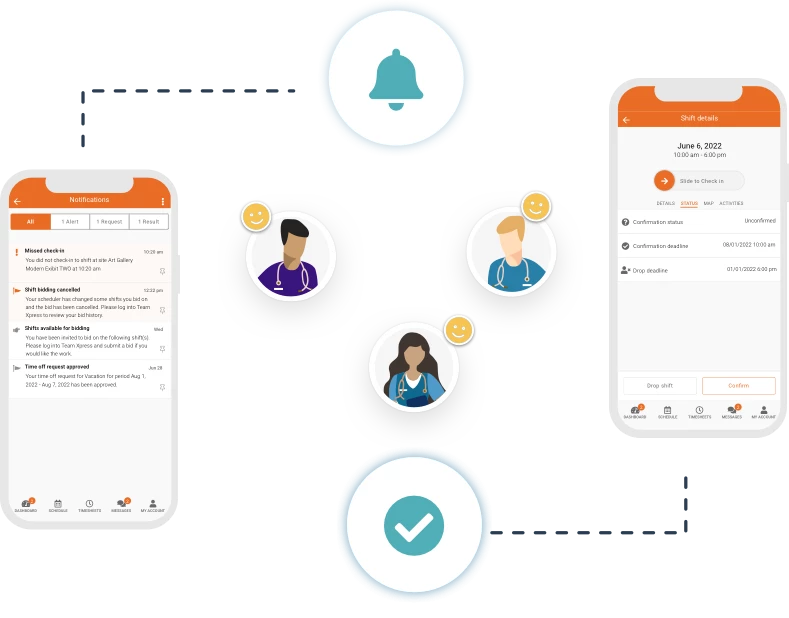
Maintaining open lines of communication with your healthcare team is critical when it comes to managing an understaffed team. Encourage them to provide feedback and suggestions regarding staffing issues. Their input can be invaluable in addressing and preventing understaffing. Regular team meetings can also serve as a platform for discussing staffing challenges and solutions collaboratively.
10. Develop a Contingency Plan
Prepare for unforeseen circumstances by developing a contingency plan. This plan should outline how you will handle emergencies, unexpected staff absences, or sudden surges in patient volume. Ensure that all team members are familiar with the contingency plan and their roles during these situations.
11. Stay Informed About Regulations
Stay up-to-date with healthcare regulations that may impact staffing requirements. Compliance with regulations ensures that your practice operates smoothly and avoids costly penalties. Designate a staff member or team responsible for monitoring and implementing regulatory changes related to staffing.
How can Celayix help Healthcare Businesses Manage their Workforce?
Celayix has worked with both home healthcare and long term healthcare businesses for over 20 years to help transform their workforce management processes.
The Celayix system knows the difference between a care aide, a Licensed Practical Nurse , a Registered Nurse, a therapist, and any type of care specialist. Our software provides you with the ability to create tailored care teams of any caregiver types based on the needs of each client and ensure best-in-class care delivery.
With flexible scheduling options such as self scheduling and shift bidding, your healthcare staff will be happier, and have improved work-life balance. Happier employees lead to increased productivity, but more importantly, lower staff turnover. High turnover rates are one of the leading causes of understaffing so tackling the root cause can be a great strategy.
Conclusion
By 2025, the U.S. is estimated to have a shortage of approximately 446,000 home health aides, 95,000 nursing assistants, 98,700 medical and lab technologists and technicians, and more than 29,000 nurse practitioners, according to a 2021 report conducted by industry market analytic firm Mercer.

Avoiding understaffing at your healthcare practice is essential for providing high-quality care, maintaining staff morale, and ensuring financial stability. By analyzing historical data, implementing efficient scheduling practices, and investing in staff development, you can create a resilient and well-staffed healthcare practice that thrives in any situation. Remember that communication and flexibility are key, allowing you to adapt to the ever-changing healthcare landscape and provide the best possible care to your patients.
Incorporating these strategies into your practice can help you avoid understaffing and create an environment where both patients and staff can flourish. With proper planning and proactive measures, your healthcare practice can operate efficiently, provide exceptional care, and remain financially viable in the long run.
By prioritizing staffing strategies and staying committed to maintaining adequate staffing levels, you can provide the highest quality care to your patients, ensure the well-being of your staff, and position your healthcare practice for long-term success. If you want to learn more about how Celayix can help you tackle understaffing, get in touch today to see a custom, live demo!


